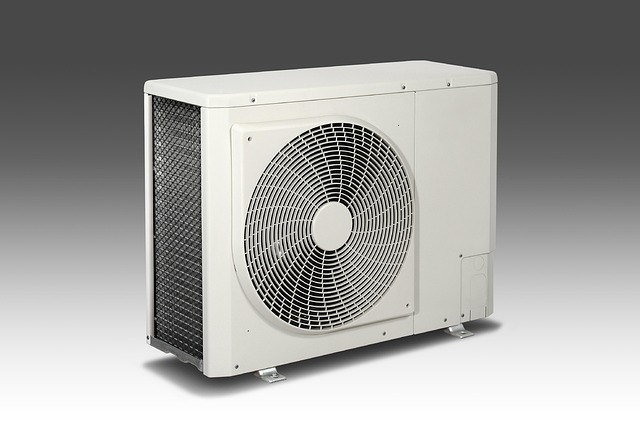Understanding HVAC Systems: Components, Maintenance, and Replacement
Heating, ventilation, and air conditioning (HVAC) systems are essential components of modern buildings, providing comfortable indoor environments year-round. These integrated systems manage temperature, humidity, and air quality to ensure optimal living and working conditions. Understanding how HVAC systems work, how they differ from simple air conditioners, and how to maintain them can help homeowners and building managers make informed decisions about their comfort systems.

HVAC systems are the backbone of indoor comfort in homes and commercial buildings across America. These complex systems work tirelessly behind the scenes to maintain ideal temperature, humidity, and air quality levels throughout the year. While many people interact with their thermostats daily, fewer understand the intricate network of components that make up a complete HVAC system and how they work together to create comfortable indoor environments. This article explores the fundamentals of HVAC technology, maintenance requirements, warning signs of system failure, and the benefits of upgrading to newer systems.
What is an HVAC System?
HVAC stands for Heating, Ventilation, and Air Conditioning—three primary functions that work together to regulate indoor environmental comfort. A complete HVAC system typically includes a furnace or heat pump for heating, an air conditioning unit for cooling, ductwork for air distribution, and various controls like thermostats to regulate operation. Some systems also incorporate air purifiers, humidifiers, or dehumidifiers to enhance indoor air quality.
The heating component may use natural gas, electricity, oil, or even geothermal energy to generate warmth during colder months. The ventilation system ensures proper air circulation and introduces fresh air while removing stale air, odors, moisture, smoke, heat, dust, and airborne bacteria. The air conditioning component removes heat and humidity from indoor air during warmer months, typically using refrigerant that cycles through a process of evaporation and condensation.
Modern HVAC systems have evolved significantly from their predecessors, with smart technology integration allowing for zone control, programmable settings, and even remote operation through mobile devices—creating more efficient and customizable indoor environments.
HVAC System vs AC: Understanding the Difference
Many people use the terms HVAC and AC interchangeably, but they represent different concepts. An air conditioner (AC) is actually just one component of a complete HVAC system. While an AC unit solely provides cooling by removing heat and humidity from indoor air, an HVAC system delivers comprehensive climate control that includes heating and ventilation alongside cooling.
Standard air conditioning systems typically consist of an outdoor condenser unit and an indoor evaporator coil, working together to cool air that is then distributed through ductwork. In contrast, a full HVAC system incorporates heating equipment (like furnaces or heat pumps), ventilation components (including air handlers, filters, and ductwork), and cooling units—all working in concert to maintain year-round comfort.
The integration of these components allows HVAC systems to provide more complete environmental control than standalone air conditioners. While air conditioners address only warm-weather comfort needs, HVAC systems offer solutions for all seasons and contribute to better indoor air quality through their ventilation capabilities.
Signs Your HVAC System is Failing
Recognizing the warning signs of HVAC system failure can help homeowners address issues before they lead to complete breakdowns or costly emergency repairs. Several indicators suggest a system may be approaching the end of its useful life or requiring significant service:
Unusual noises like grinding, scraping, or squealing often indicate mechanical problems with motors, bearings, or belts. Inconsistent temperatures throughout the home—with some rooms too hot while others remain too cold—may signal ductwork issues, thermostat malfunctions, or inadequate system capacity. Rising energy bills without corresponding increases in usage typically point to declining efficiency as components wear out or become clogged with debris.
Other warning signs include frequent cycling (turning on and off repeatedly), excessive humidity or dust in the home, and visible water leaks or moisture around the system components. Systems that are more than 10-15 years old and requiring increasingly frequent repairs are generally prime candidates for replacement rather than continued maintenance.
Perhaps most concerning is when occupants experience unexplained headaches, respiratory issues, or other health symptoms that improve when away from the building—potentially indicating ventilation problems or refrigerant leaks that compromise indoor air quality.
Benefits of a New HVAC System
Upgrading to a modern HVAC system offers numerous advantages that extend beyond simple temperature control. Energy efficiency improvements represent one of the most significant benefits, with newer systems using 20-50% less energy than models manufactured just a decade ago. This efficiency translates directly into lower utility bills and reduced environmental impact.
Enhanced comfort features in newer systems include variable-speed motors that run at different levels depending on need rather than simply turning on and off at full capacity. This results in more consistent temperatures, better humidity control, and quieter operation. Many new systems also incorporate advanced air filtration technologies that capture smaller particles, allergens, and pollutants—contributing to healthier indoor environments.
Smart technology integration allows for precise zone control, learning capabilities that adapt to household routines, and remote operation through smartphones and voice assistants. These features not only improve convenience but also optimize energy usage by heating and cooling spaces only when needed.
From a financial perspective, the installation of a new, high-efficiency HVAC system can increase property value and may qualify homeowners for utility rebates, tax credits, or other incentives designed to encourage energy-efficient home improvements.
HVAC System Maintenance: Essential Care Tips
Regular maintenance is crucial for maximizing HVAC system performance, efficiency, and lifespan. A well-maintained system not only operates more efficiently—saving energy and money—but also provides more consistent comfort and experiences fewer breakdowns.
The most fundamental maintenance task is regular filter replacement or cleaning, typically recommended every 1-3 months depending on filter type and household conditions. Clean filters improve airflow, reduce strain on system components, and enhance indoor air quality by capturing dust, allergens, and other particulates.
Seasonal professional maintenance—ideally in spring for cooling systems and fall for heating systems—allows technicians to inspect, clean, and tune all components before periods of heavy use. These professional services typically include checking refrigerant levels, inspecting electrical connections, lubricating moving parts, and ensuring proper airflow throughout the system.
Homeowners can complement professional maintenance by keeping outdoor units clear of debris, vegetation, and obstructions that might impede airflow. Indoor vents and registers should remain unblocked by furniture or drapes to allow proper air circulation. Additionally, programmable thermostats should be properly configured to reduce system operation when spaces are unoccupied.
For ductwork, periodic professional inspection can identify leaks or disconnections that waste energy and compromise comfort. In homes with older ductwork, professional sealing and insulation can significantly improve system efficiency and performance.
Implementing these maintenance practices can extend system lifespan by several years while ensuring optimal performance throughout the equipment’s service life. Most HVAC professionals recommend establishing a regular maintenance agreement that includes bi-annual inspections and priority service during peak seasons.
HVAC systems represent significant household investments that provide essential comfort and air quality benefits when properly maintained. Understanding the components, recognizing warning signs of failure, appreciating the benefits of modern systems, and implementing regular maintenance practices all contribute to making informed decisions about these critical home systems. Whether maintaining an existing system or considering an upgrade, this knowledge helps homeowners optimize comfort while managing energy costs effectively.




